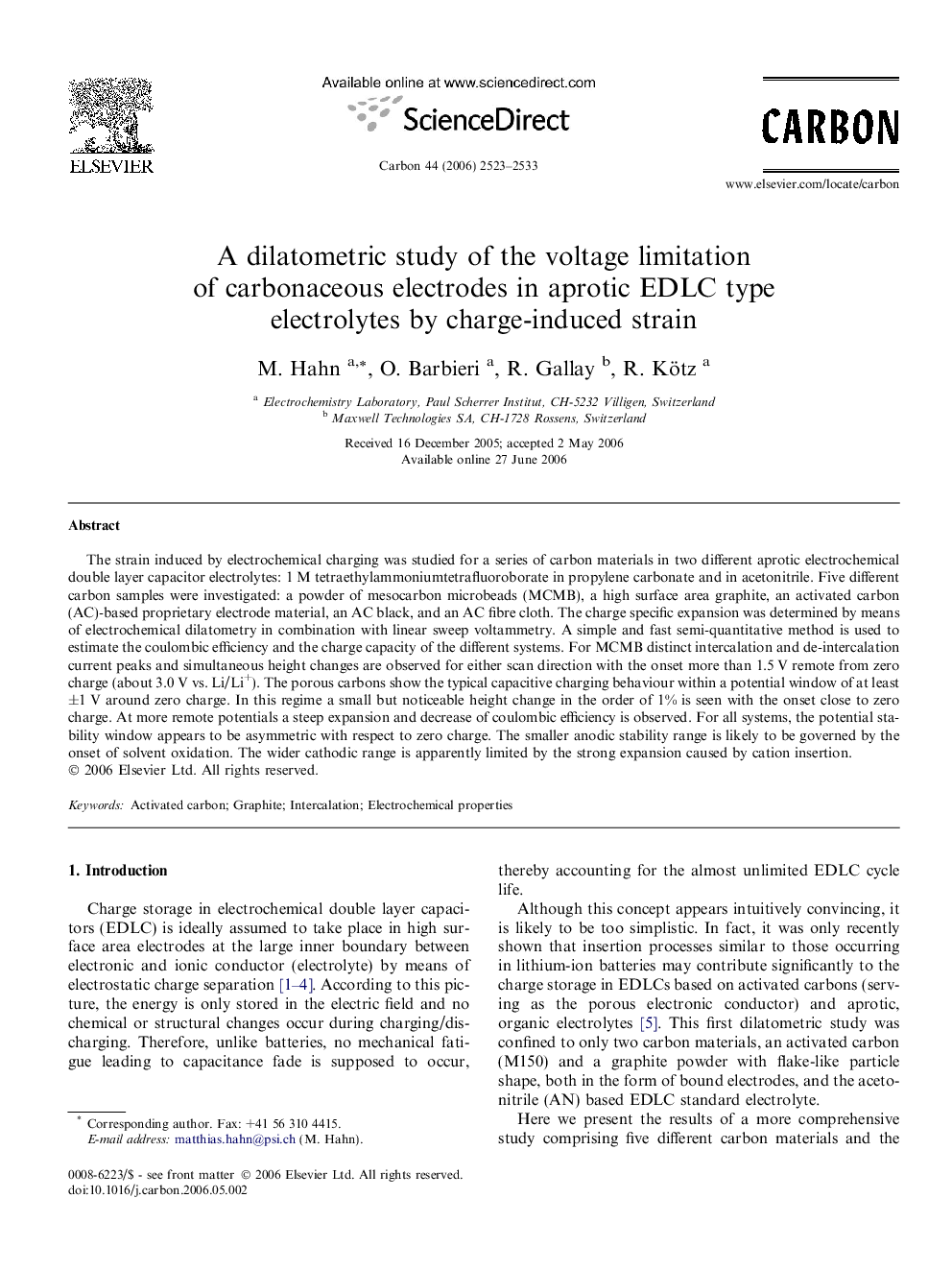| Article ID | Journal | Published Year | Pages | File Type |
|---|---|---|---|---|
| 1417825 | Carbon | 2006 | 11 Pages |
The strain induced by electrochemical charging was studied for a series of carbon materials in two different aprotic electrochemical double layer capacitor electrolytes: 1 M tetraethylammoniumtetrafluoroborate in propylene carbonate and in acetonitrile. Five different carbon samples were investigated: a powder of mesocarbon microbeads (MCMB), a high surface area graphite, an activated carbon (AC)-based proprietary electrode material, an AC black, and an AC fibre cloth. The charge specific expansion was determined by means of electrochemical dilatometry in combination with linear sweep voltammetry. A simple and fast semi-quantitative method is used to estimate the coulombic efficiency and the charge capacity of the different systems. For MCMB distinct intercalation and de-intercalation current peaks and simultaneous height changes are observed for either scan direction with the onset more than 1.5 V remote from zero charge (about 3.0 V vs. Li/Li+). The porous carbons show the typical capacitive charging behaviour within a potential window of at least ±1 V around zero charge. In this regime a small but noticeable height change in the order of 1% is seen with the onset close to zero charge. At more remote potentials a steep expansion and decrease of coulombic efficiency is observed. For all systems, the potential stability window appears to be asymmetric with respect to zero charge. The smaller anodic stability range is likely to be governed by the onset of solvent oxidation. The wider cathodic range is apparently limited by the strong expansion caused by cation insertion.
